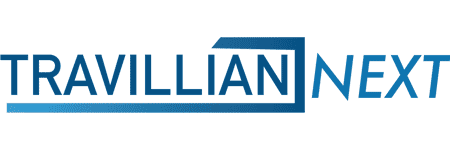We are in the middle of a digital revolution, yet technology is nothing new to banking. Magnetic strips and ATMs have been around since the 1960s, and, incredibly, online banking goes back to the mid-90s. Until recently, this so-called “revolution” was linear. Suddenly, in the wake of the COVID-19 outbreak, we hear “the death of branch banking” bandied about. Looking in his crystal ball, Chip Reeves, CEO of Beach Community Bank (Fort Walton, FL; $500M total assets), provides a powerful metaphor. “Branch banking was a dinosaur already. COVID-19 was the meteor… the event that will permanently alter the brick and mortar strategy of institutions.” With the ascent of digital, Reeves expects an equally fast decline in branch count. “In both commercial and consumer businesses, the pandemic will accelerate the digital revamp by five years,” Reeves says. “Our digital channel use increased 40% over the past 45 days, and the segment that increased most was new users. These people were in our lobbies. I could see branch count decreasing 50% over the next few years. Banks innovate or align themselves with innovation to remain relevant.”
Most community banks lack the resources to be innovative. “Banks under $10B are less likely to be innovative,” says Greg Bixby, former Technology & Operations Executive of Chemical Bank and owner of Bixby Consulting Group. “How many family-owned $2B banks’ owners will say, ‘Here’s $500,000. Spend it however you want, and you don’t have to return anything’?” According to Bixby, banks in the $10B to $50B range, who may have in-house development, still may not be innovative. “They need to look at the niche they occupy or want to occupy, so they can focus their technology efforts on being a standout in that area,” he continues. “But they still have to rely on vendors for most technology. They may find a FinTech partner, or perhaps do development for one area, but they can’t afford to do it firmwide.” In Bixby’s opinion, organizations that pursue a digital-first model must have an agile environment, including the right talent, infrastructure, platform, and partnerships that allow them to scale up quickly. Further, they must have someone who is aware of the digital ecosystem, understands how everything plays together and has an overarching strategy. While that person may not be a technologist, s/he must be tech savvy and may benefit from outside advice.
How Adaptive Is Your Bank?
Other banks may have the resources but lack the mentality for innovation. Jason Henrichs, CEO of the community bank tech consortium Alloy Labs Alliance, places banks into four categories:
- There are banks that simply put on “digital lipstick” but are unwilling to rethink what it means to be a bank. These institutions comprise about 50% of the industry.
- The next largest group, in Henrichs’ view, are banks led by executives who know the world is changing but perhaps not fast enough that it matters to them. “Their mentality is, ‘I’m going to weather it out. This is the next generation’s issue,’” he says.
- The most dangerous group, according to Henrichs, are those that refer to themselves as “a fast follower”. He considers this mentality delusional, as these banks fail to recognize that– unless they have the same strengths, customers and strategies as those they follow– simply copying their digital tools will not make them successful.
- The final, and smallest, category is made up of banks that know they need change. They are either starting to address that need or have already been innovating and are looking to accelerate their approach. Henrichs believes only 10% of banks fall into this category.
Chip Reeves combines Bixby and Henrichs’ views. “Innovation comes down to two things,” Reeves said. “Mindset and resources. You can have an organization that has abundant resources, maybe a super-regional institution, that does not have the mindset or has decided not to be cutting edge. They’ll be an adopter.” He notes that, when he arrived at Fifth Third, they were an adopter (and not even an early adopter.) When former CIO Greg Carmichael became CEO, “his vision in using technology to enable the customer experience and create internal efficiencies was new for the bank and became well-adopted.” Reeves sees a possibility that, in the future, more CEOs will be former CIOs who drive innovation. However, in Reeves’ estimation, most community banks will be unable to build.
Innovators in the Space
Some community banks have chosen to build, however. Bank OZK ($24.5B) and Eastern Bank ($12.3B) operate innovation labs which, at times, have made them look more like technology startups than traditional banks. Eastern’s foray into FinTech, Eastern Labs, was successfully spun off as Numerated Growth Technologies. Like these trailblazers, the key first step to erecting an in-house strategy was to attract the right leadership, including Board-level. WaFd’s leadership reflects a commitment to build digital-first, which CEO Brent Beardall believes will prevail over FinTech disruptors. “We attracted Steve Singh, co-founder of Concur Technologies, to our Board,” said Beardall. “Steve is probably among the top 50 technologists in the world. There are FinTechs trying to enter the industry. That will stifle their technology and they’ll sell the bank. I see banks as the future of banking.”
Bank OZK, Eastern Bank and WaFd are banks with considerable resources. But what about smaller players with assets under $10B? Some have been remarkably innovative, pursuing a blend of early adoption, partnerships and in-house development. While Cross River Bank has $2.5B total assets and 300 employees, has delivered digital solutions (e.g., banking-as-a-platform, payments and loan origination) on par with global banks and was recognized by Forbes as one of 2019’s “FinTech 50.” BrixDirect, considered a leading online banking platform, generated buzz this year when they offered a one-year CD at 2.25%, which raised record numbers in 15 days with minimal visibility from traditional aggregators such as BankRate. With Cross River, “bank” is a misnomer, as many projects are not directly visible to consumers. In early 2019, they partnered with RS2 Software to provide a seamless push to debit card services. Later in the year, the bank moved to enhance payments capabilities by joining TCH’s RTP network, the smallest bank on the network at the time. Most recently, they connected their payment rails to some of the largest payments processors to offer additional services and, separately, launched a pilot that enabled companies to pay employee expenses to registered cards with Cross River powering the back end.
In-house development has paid surprising dividends for the bank. Amid the SBA’s PPP rollout, Cross River engineered an interface for E-Tran that enabled them to automate the submission of thousands of loans per day. They subsequently assisted a large core banking provider and delivered their first XML spec, off of which they based their code. In turn, this assisted several community banks in building their own interfaces. “By being small and nimble, we are able to do things that larger banks struggle with,” Technology Chief of Staff Jesse Honigberg says. “When the gun went off for the PPP rollout, it was like a hackathon. SBA guidance was constantly changing and the E-Tran API wasn’t working the way it was supposed to. Our whole solution was engineered and stood up within five days, and I’m proud of what we accomplished.” As the dust settles, Cross River, with their $2.5B balance sheet bank, will have helped fund thousands of loans through the PPP.
Also of note is Quontic Bank ($480M), recapitalized in 2009, and completely transformed by CEO Steve Schnall into a prominent nationwide wholesale mortgage operation, with a niche in non-qualified mortgages. They have further rebranded themselves as an “Adaptive Digital Bank” with an inventive, tech-focused agenda, led by Chief Innovation Officer, Patrick Sells, 29. Some of Quontic’s investments have been highly innovative. Later this year, the bank plans to introduce a contactless payment ring. This will complement New York’s new contactless terminal technologies, giving COVID-shellshocked customers another reason to bank with Quontic. “There’s innovation for the sake of innovation, and then there’s innovation that actually helps the business move forward. Some ideas can’t go forward and need to die,” Sells observes. A key to Quontic’s ability to take innovation risk is process. “We have a process and a document that we fill out on every innovation we want to undertake, which serves as the memo people have to sign off on and say, ‘This makes sense to pursue.’”
Others have taken notice. Sells receives daily phone calls from banks asking for advice. “We are uniquely positioned because we were a traditional bank that transitioned to digital. And there’s a lot of interest in figuring out how to do it.” Sells believes that there will be demand among community banks for talented professionals with digital banking transformation experience. He has also left the door open for Quontic to play a B2B role, helping other banks to identify and develop digital solutions. “There’s a role for us, though we haven’t moved aggressively on it,” he states. “It’s happening organically. We’ve built a reputation, and banks are reaching out to us. There’s a market there, with market share we can capture.”
Working Collectively to Adapt
Bank consortiums are also poised to capture market share. These consortiums, in effect, are external offices of innovation which utilize their networks to achieve solutions collectively. An example is Alloy Labs, with 40 banks participating in its platform. “Our reason for being is serving community banks’ need for increased leverage from technology to create better and more intimate customer experiences,” says CEO Jason Henrichs. “These institutions are resource-constrained, which forces them into a tough position.” Some banks, Henrichs believes, will invest in the “arms race” but will fall short of global players like Chase and would never win anyway simply by keeping pace. Others will acknowledge that they cannot keep up in core business but may choose to go big in some specific area that could be game changing for customers. These institutions “are likely to fail, but if they win, they win big.”
Is there another strategic position? According to Henrichs, this is what Alloy Labs represents. “By working together, banks get the benefits of network effects: learning from each other, getting better insights, and the efficiencies that come with economies of scale.” One of Alloy Labs’ most active communication conduits is their Slack channel, which has been instrumental in responding to crises like COVID-19 and the PPP rollout, where information sharing has been vital. At the other extreme, Alloy’s banks may need a solution they cannot develop and which no FinTech offers. In this case, “We pick a partner together, turn them into experts and help fund it,” Henrichs says. “Then we will help own it and roll it out as we bring it to market. So, jointly, our partners are creating technology. Ultimately, this is how most innovation in community banking will happen.”
In closing, the digital revolution is an existential threat to any community bank that is unprepared for it. COVID-19 has simply made that clear. Some organizations lack the resources to innovate; others, which may have the resources, lack the proper mindset. Yet, even without the considerable in-house resources that larger institutions can afford, there are ways that community banks can compete. Whether they try to navigate the ecosystem, invest in a niche, or join a network of banks, they must have a strategy for transformation. The meteor has already struck the industry.
Travillian’s Banking and FinTech Practice provides Search and Talent Advisory (TT|Align) services to depository institutions across the country. Established in 1998, the firm has built a unique platform that touches every corner of the industry. To learn more, click here, or get in touch below!
|
Brian Love, Head of Banking & Fintech
(484) 680-6950 | blove@traviilaingroup.com |






